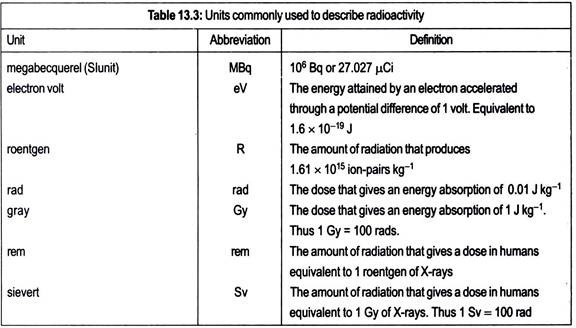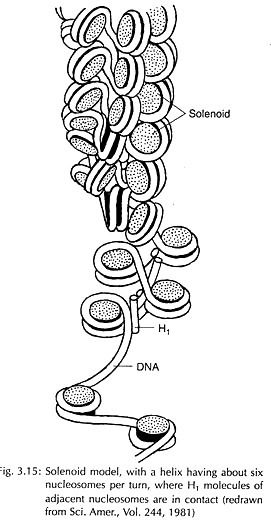According to the Bronsted-Lowry definitions, an acid is a proton (or H +) donor and a base is a proton acceptor. For example, when acetic acid is dissolved in water, a certain number of the acetic acid molecules dissociate as follows:
In the reaction, a proton of acetic acid has been donated to water, producing an anion (acetate) and a cation (the hydronium ion).
 Acetic acid donated the proton (H+) and is therefore the acid. Water accepted the proton and is a base in the reaction. If the reaction is reversed, the acetate anion acts as a proton acceptor and therefore fits the criterion of a base.
Acetic acid donated the proton (H+) and is therefore the acid. Water accepted the proton and is a base in the reaction. If the reaction is reversed, the acetate anion acts as a proton acceptor and therefore fits the criterion of a base.
Acetic acid and acetate ions are referred to as a conjugate acid-base pair. Protons are attracted both to the conjugate base and to water. An acid that readily donates protons to water is called a strong acid, while an acid that does not readily donate protons to water is termed a weak acid. Each acid is characterized by its tendency to dissociate; the extent of dissociation may be determined from the acid’s dissociation constant, K, defined by
where for a given solution [HA] is the concentration of un-dissociated acid, [A –] is the concentration of conjugate base, and [H + ] is the hydrogen ion concentration. The dissociation constant varies somewhat according to the temperature of the solution customarily in physiology and biochemistry, one refers to the apparent dissociation constant, K’, of an acid. This value is based on the concentrations of reactants and products that can actually be measured following dissociation of the acid in water. Table 3-6 lists the apparent dissociation constants of some common acids.
The concentration of H+ in cells varies widely. The range may exceed 0.1 to 10-10 M. Although these concentrations may not seem high, small changes in H + concentration have noticeable effects on cell function. It is inconvenient to express the H+ concentration in molar terms (such as 1 x 10-7 M), and the pH scale proposed by S0rensen is used instead.
Accordingly,
pH= -log10 [H+] (3-2)
At 25°C, the H+ (and OH”) concentration of pure water is 1 x 10-7 M and the solution is at neutrality. At this concentration,
pH= -logi0 [1.0 x 10-7] = 7.0 (3-3)
Table 3-7 shows the range of the pH scale and lists the pH values of a number of familiar liquids. In the laboratory, the pH of a solution is determined potentiometrically using an instrument called a pH meter. The instrument contains two electrodes that are immersed in the liquid sample; one of these is a reference electrode (whose electrical potential is constant) and the other is a glass electrode (whose electrical potential depends on the pH of the sample).
An electrometer measures the difference in electrical potential between the two electrodes and this value is then converted to pH units and is displayed. Most pH meters are accurate to within 0.01 pH units.A buffer solution is formed by mixing together a weak acid and its conjugate base. These solutions effectively slow the rate of pH change over a limited portion of the pH scale when a quantity of strong acid or base is added to the buffer.
As shown in Figure 3-6, titration of H3PO4 (phosphoric acid) with up to about 8 ml of NaOH causes a gradual increase in pH to about 2.5. In contrast, the next few milliliters of NaOH that, are added bring about a rapid rise in pH to about 6.0. The gradual pH change observed on addition of the first 8 ml of base is the result of the conjugate acid- base buffering capacity of the H3P04 and NaH2P04 (i.e., the NaOH reacted with H3PO4, forming the NaH2PO4 and H2O), that is,
A second buffering “plateau” is produced by the conjugate acid-base buffer system of NaH2PO4 and Na2HPO4. The third plateau is achieved through the actions of Na2HPO4, and Na3PO4. Just as the hydrogen ion concentration can be expressed in terms of pH (or negative logarithms), the dissociation constant for a weak acid, Ka, can be similarly defined:
pKa= -log Ka (3-4)
The pK for each conjugate acid-base pair occurs at the mid-point of its buffering plateau. The most effective buffering range of an acid-base pair usually extends 0.5 pH units to each side of the pK value. The relationship between pH and pKa is expressed in the Henderson-Hasselbach equation:
where the weak acid is represented by [HA–] and its conjugate base by [A–]. When the concentrations of the two are equal, as at the midpoint of a plateau, the last term of equation 3-5 becomes zero (i.e., log10 1 = 0), and therefore pH = pKa. The Henderson- Hasselbach equation can be used to calculate the pH if the concentrations of the acid and base are known.
The equation is also useful for calculating the necessary quantities of acid and conjugate base that must be mixed together to prepare a buffer that has a particular pH. However, it should be pointed out that the equation is an approximation and is most accurate when almost equal amounts of the acid and base are mixed. The pH values of several buffers that are routinely used in cellular studies are listed in Table 3-8.




